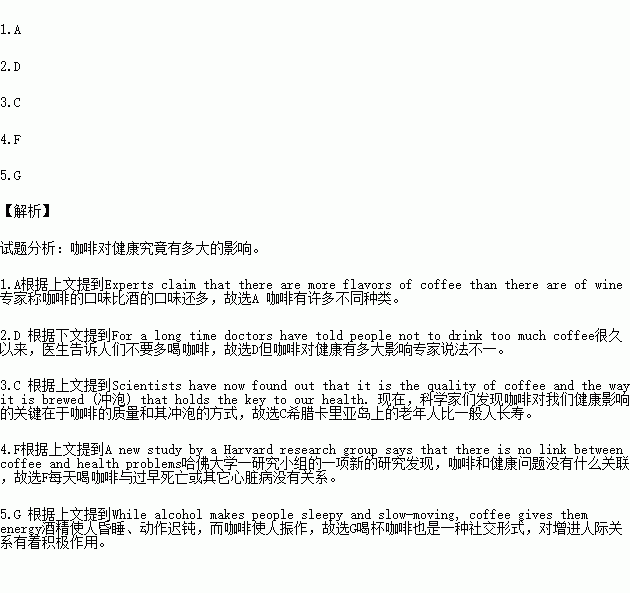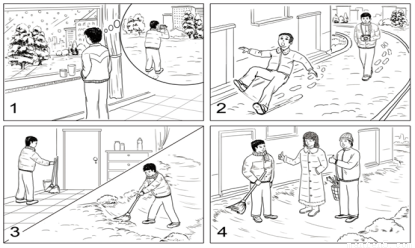题目内容
根据短文内容,从短文后的选项中选出能填入空白处的最佳选项。选项中的两项为多余选项。
Coffee is one of the most popular drinks around the world. 1. Experts claim that there are more flavors of coffee than there are of wine. Coffee contains caffeine, an element (成分) that raises our awareness, keeps us from falling asleep or simply gives us a kick in the morning or after lunch.
2. For a long time doctors have told people not to drink too much coffee, because it may lead to heart problems, high blood pressure, insomnia (失眠) and headaches.
Scientists have now found out that it is the quality of coffee and the way it is brewed (冲泡) that holds the key to our health. 3. Among other things, this is linked to the consumption of a strong brew of coffee. Experts also point out that different roasts and types of coffee beans have different effects on our health.
A new study by a Harvard research group says that there is no link between coffee and health problems. 4. Doctors, however, warn against drinking too much coffee, as it can lead to stomach problems.
Coffee has many advantages, as the new study suggests. While alcohol makes people sleepy and slow-moving, coffee gives them energy. 5.
Although a lot still needs to be uncovered about coffee, it seems to reduce the risk of cancer and diabetes. Reports show that people who drink coffee may develop Parkinson’s disease later in life, or maybe not at all.
A. There are many different types of coffee.
B. Scientists ask people not to drink coffee at night.
C. Elderly people in Greece live longer than normal.
D. But experts are still undecided on how healthy coffee is.
E. Sugar can change the different levels of caffeine in a cup of coffee.
F. Drinking several cups of coffee a day is not connected with heart diseases.
G. Getting together for a cup of coffee also has a positive effect on relationships.


